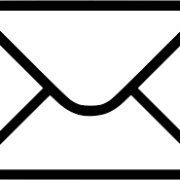Have you just begun writing emails? Do you want to feel confident when emailing a client? Don’t worry!
Table of Contents
Here are the 10 tips for writing sales emails:
DO
1. Focus on a single sales message
Have a very clear purpose before you even begin. Although the client you’re writing for might have lots of things or services to sell you want to pick just one. Your reader doesn’t want to have to plough through loads of stuff that’s not relevant to them. It’s not just that they “don’t want” they simply won’t.
2. Write an enticing subject line
Forget “Me Me Me”, think: “You You You”. Get into the mind of your reader and think: What would make them want to open this email rather than deleting it? You could offer them something; you could give them a solution to a problem you know they have; you could intrigue them by posing a question and then answer it in the email; or create urgency by suggesting that something is only available for a short time and that they should act now or miss out. Just saying.
3. Get to the point already!
It’s tempting to start by introducing the company you’re writing for and explaining that they have fifty years experience blah blah blah yawn. You’re lucky that the receiver has even opened this email so don’t blow it now: Tell them immediately what this email’s all about. Not only that, tell your reader what’s in it for them to continue reading. What’s the benefit? Give me a reason to read on!
4. Keep it short
There’s plenty of time later for going into details about your offer. The objective with a first sales email is to get some response. After that – when you know for sure they’re interested – you can start unwrapping your sales message in all its glory. As a rule of thumb, don’t make them scroll your email. Get everything you need to say said in just a few lines. If you can just suggest that you have a solution to a problem they’re facing that really should be enough to get them to bite. Any more and you give them time to wriggle free.
5. Tell them clearly what to do next
Don’t be shy now. Make it absolutely clear what they need to do next (remember you’re going to be judged on the response rate of this email so you want there to be no doubt how to respond). Say it more than once. Even put in a button for them to click with a reminder of the offer written on it.
DON’T
6. Don’t waffle
We always talk about making copy “conversational” in tone but don’t take it too literally. This isn’t a garden party where you have to mingle and introduce yourself to lots of different people. Or to make polite chitchat. This is more like speed dating. Forget waffly pleasantries like “How are you? Well, I hope” and just make your pitch. The busy business person at the other end would much rather directness than excessive politeness.
7. Don’t talk about yourself
It’s actually good to stick with that dating analogy for a bit longer. The secret of a good first date is not to talk too much about yourself but to give your partner as much chance as possible to talk about themselves. Your job as a copywriter is to set up those opportunities in a business way and to get into the other person’s mind and discover what makes them tick.
8. Don’t be too formal. Or informal.
“Dear Sir/Madam” or “Dear Procurement Professional” are both out for a start (unless by some freak of luck and bad parenting your target really is called Mr or Mrs Procurement Professional). If the marketing department hasn’t even made the effort to find out the actual names on its mailing list you may as well give up before you go any further. But then again, try to avoid being too matey. “Yo Jack” or “Hey Brenda” is sure to get people’s backs up right away. It’s like when someone you hardly know starts calling you “Buddy”. Ugh. Aim for somewhere in the middle: “Mr Ericsson”, “Miss Brody”, “Mrs Professional”…
9. Don’t be afraid to offer incentives
They say the most powerful word in advertising is “Free”. Don’t be afraid to use it. It could be free advice, a free trial or a free subscription. Or reward a response with a free gift (yes, I know, aren’t all gifts free?). It could also be something like “See how we could cut 20% off your procurement costs”. Or put a time-sensitive element into the offer: “Reply before Friday and get XXX half price”.
10. Don’t treat an email as a letter
So “Dear Sir/Madam” is a No-no. And at the other end of the email let’s avoid “Yours faithfully” which is something from the nineteenth century. Email is rather more informal than a printed letter by nature, not as stiff and stuffy. There are no end of salutations you could use at the end: “Best wishes”, “Best regards” or even “All the best”. But PLEASE PLEASE PLEASE don’t just say “Best”. It doesn’t mean anything! Keep the tone in the email conversational, no “With reference to…” or “It has come to our attention…” type language. And, completely un-letter-like, why not use graphics to support your sales message and generally bring your email to life?



 preach-copywritercollective
preach-copywritercollective 


